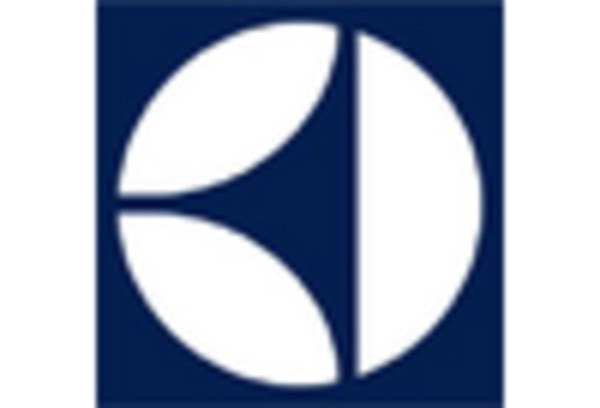Growth of E-commerce Platforms
The rise of e-commerce platforms is transforming the B2B White Goods Market, providing businesses with unprecedented access to a wide range of products. Online marketplaces facilitate easier comparison of products, prices, and features, enabling businesses to make informed purchasing decisions. Recent statistics suggest that e-commerce sales in the B2B sector are projected to reach trillions of dollars, indicating a substantial shift in buying behavior. This trend is particularly beneficial for small and medium-sized enterprises that may lack the resources for traditional procurement methods. As e-commerce continues to expand, the B2B White Goods Market is likely to adapt, with manufacturers enhancing their online presence to capture this growing segment.
Rising Demand for Energy Efficiency
The B2B White Goods Market is experiencing a notable shift towards energy-efficient appliances. Businesses are increasingly prioritizing sustainability, driven by both regulatory pressures and consumer preferences. According to recent data, energy-efficient appliances can reduce energy consumption by up to 30%, which translates into significant cost savings for businesses. This trend is further supported by government incentives aimed at promoting energy-efficient technologies. As a result, manufacturers are compelled to innovate and offer products that not only meet energy standards but also appeal to environmentally conscious businesses. The emphasis on energy efficiency is likely to shape product development strategies within the B2B White Goods Market, fostering a competitive landscape where efficiency becomes a key differentiator.
Customization and Tailored Solutions
Customization is becoming a pivotal driver in the B2B White Goods Market, as businesses seek appliances that cater to their specific operational needs. The demand for tailored solutions is rising, with companies looking for products that can be adapted to their unique workflows. This trend is supported by data indicating that businesses are willing to invest in customized appliances that enhance productivity and efficiency. Manufacturers are increasingly offering modular designs and flexible configurations to meet these demands. As the market evolves, the ability to provide customized solutions may become a key competitive advantage within the B2B White Goods Market, allowing manufacturers to differentiate themselves in a crowded marketplace.
Increased Focus on Health and Hygiene
The B2B White Goods Market is witnessing an increased emphasis on health and hygiene, particularly in sectors such as food service and healthcare. Businesses are investing in appliances that promote cleanliness and safety, driven by heightened awareness of hygiene standards. For instance, appliances with antimicrobial features are gaining traction, as they help mitigate the risk of contamination. Market data indicates that the demand for hygiene-focused appliances is expected to grow significantly, as businesses prioritize the health of their employees and customers. This trend is likely to influence product development and marketing strategies within the B2B White Goods Market, as manufacturers respond to the evolving needs of their clients.
Technological Advancements in Appliances
Technological innovation is a primary driver in the B2B White Goods Market, as businesses seek appliances that enhance operational efficiency. The integration of smart technologies, such as IoT connectivity, allows for real-time monitoring and management of appliances, leading to improved performance and reduced downtime. Data indicates that the adoption of smart appliances can lead to a 20% increase in operational efficiency. Furthermore, businesses are increasingly interested in features such as remote control and predictive maintenance, which can minimize disruptions. As technology continues to evolve, the B2B White Goods Market is likely to witness a surge in demand for advanced appliances that offer both functionality and convenience.


















Leave a Comment